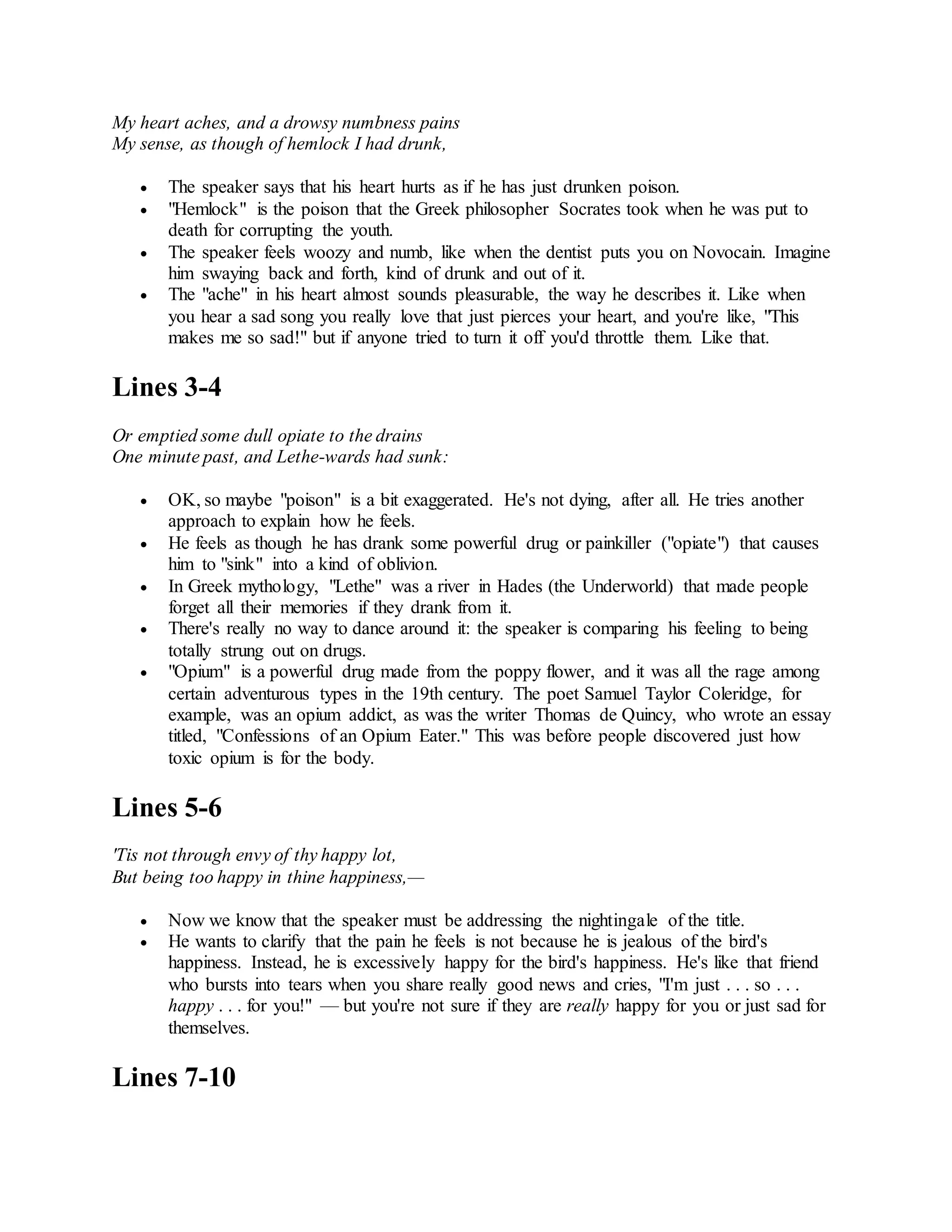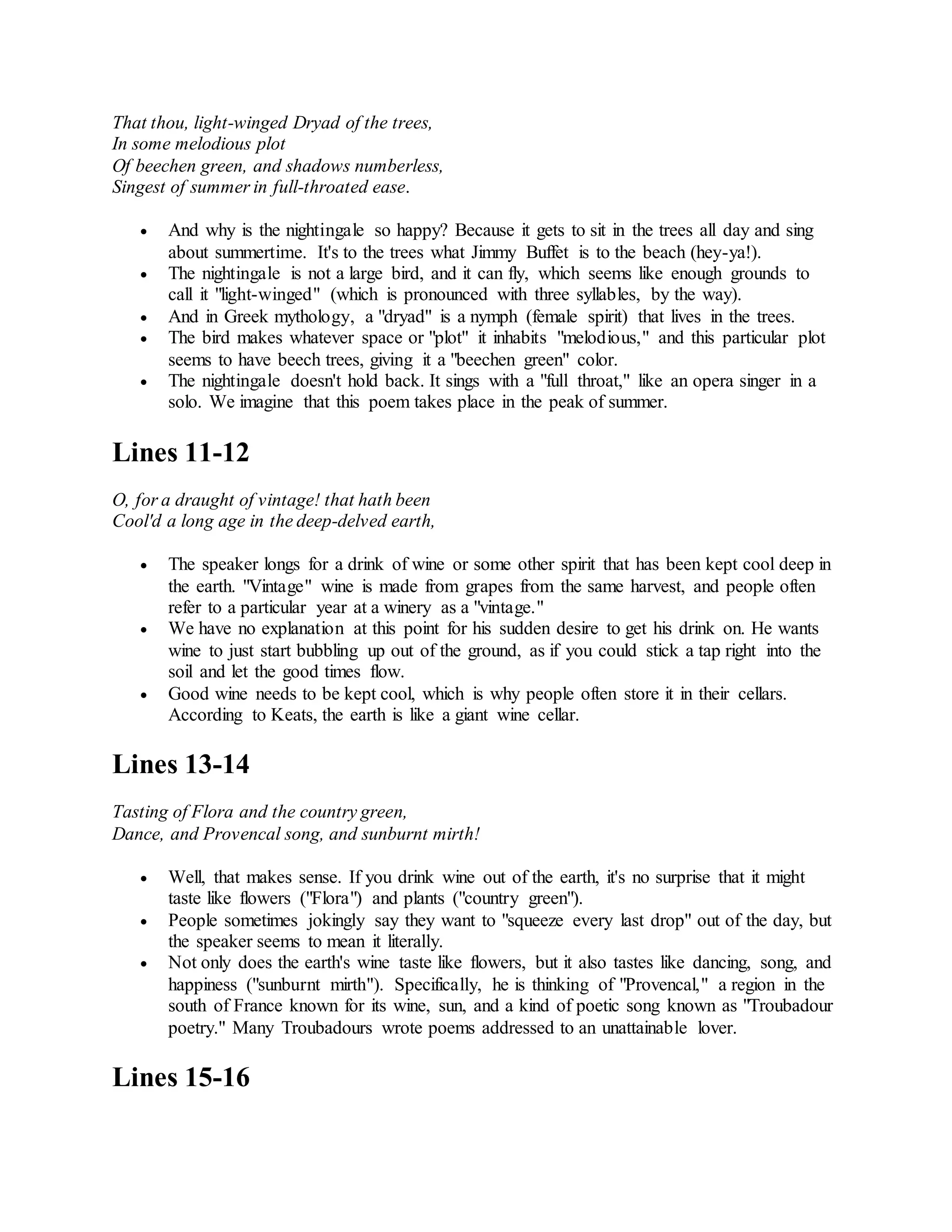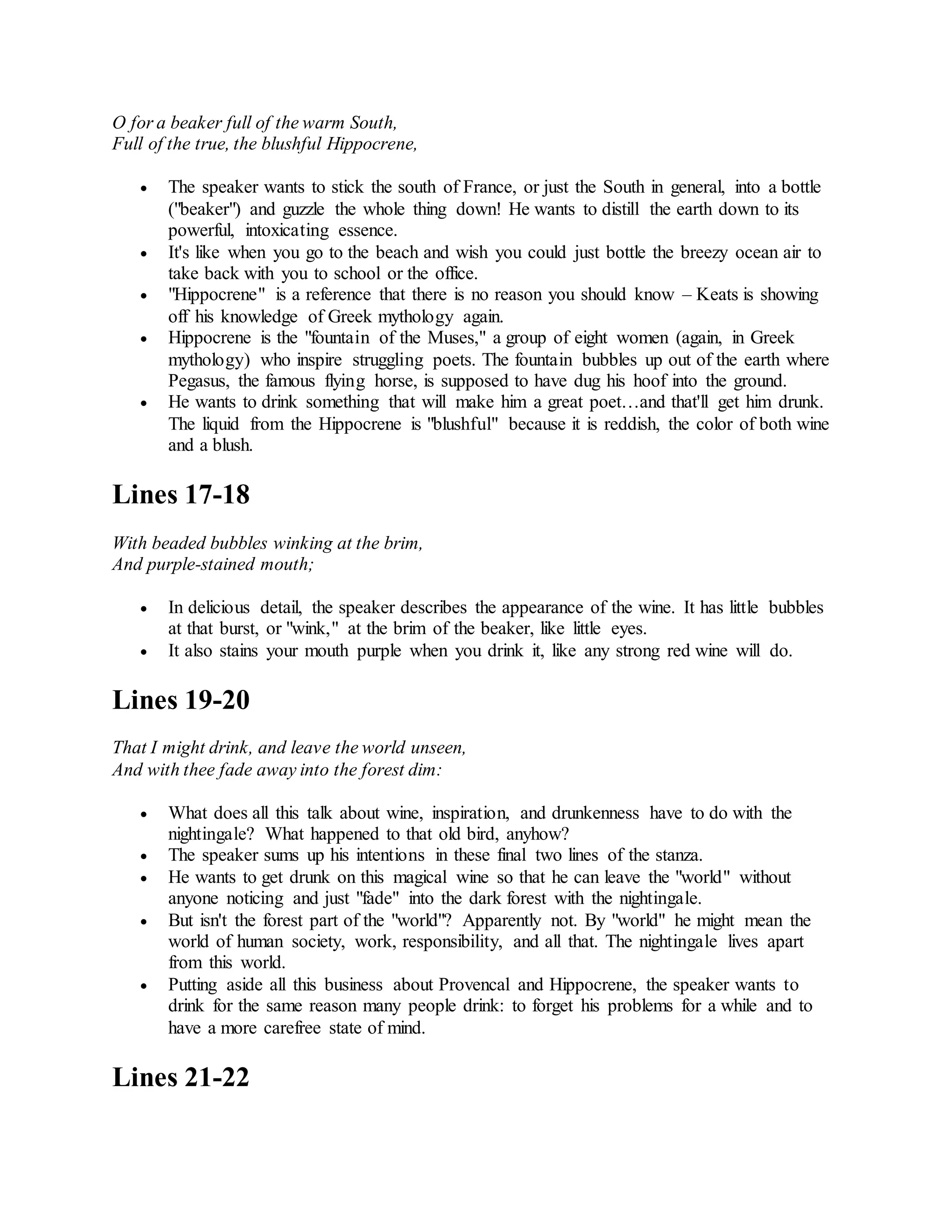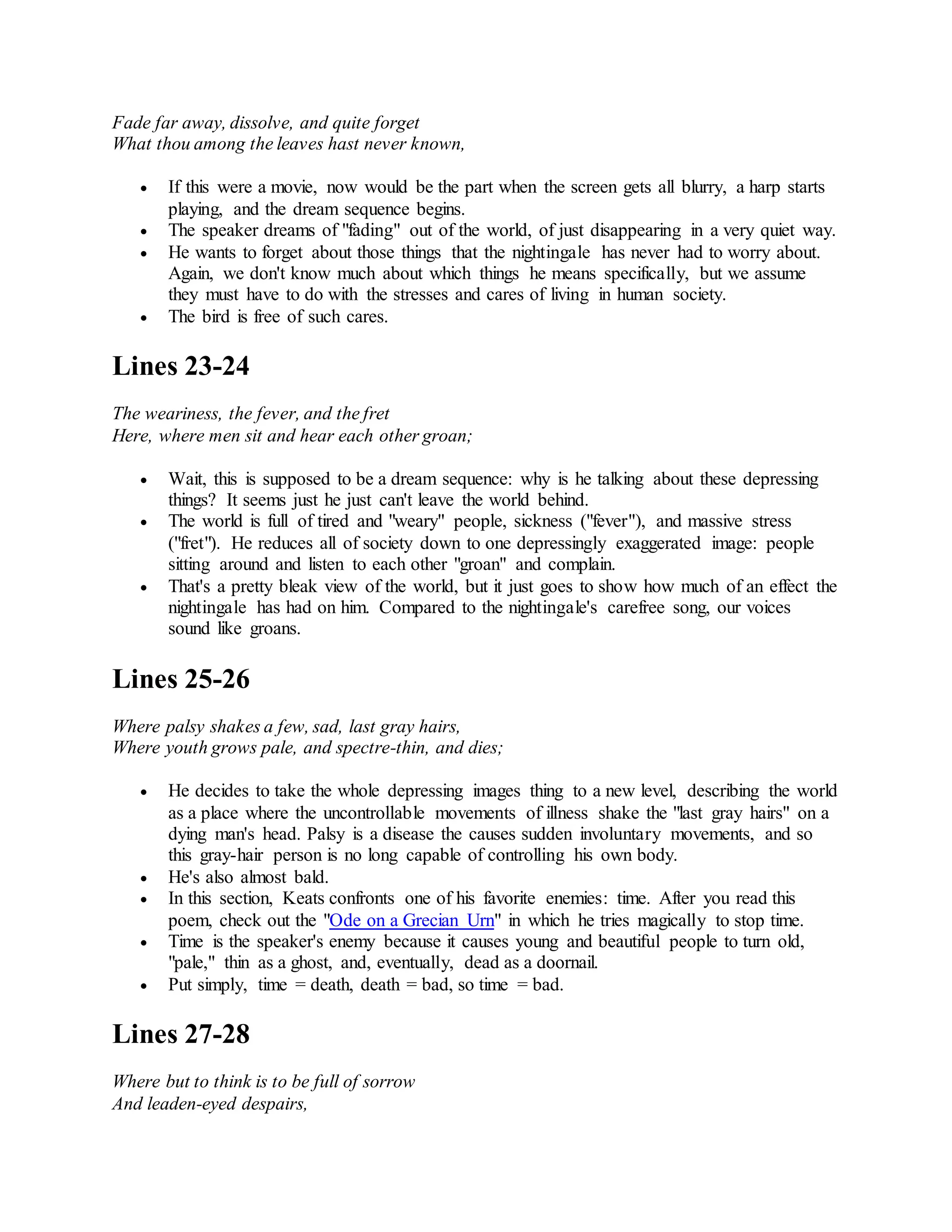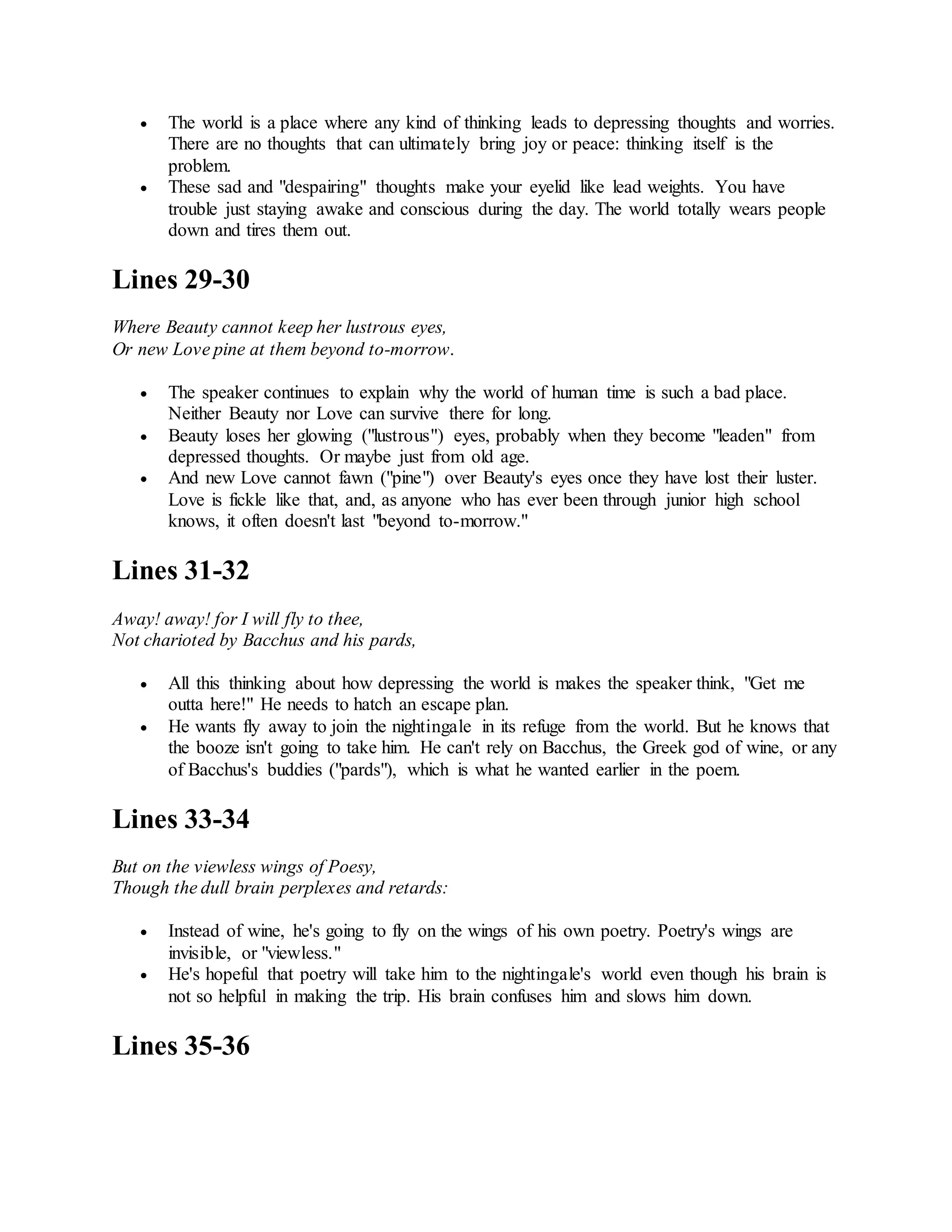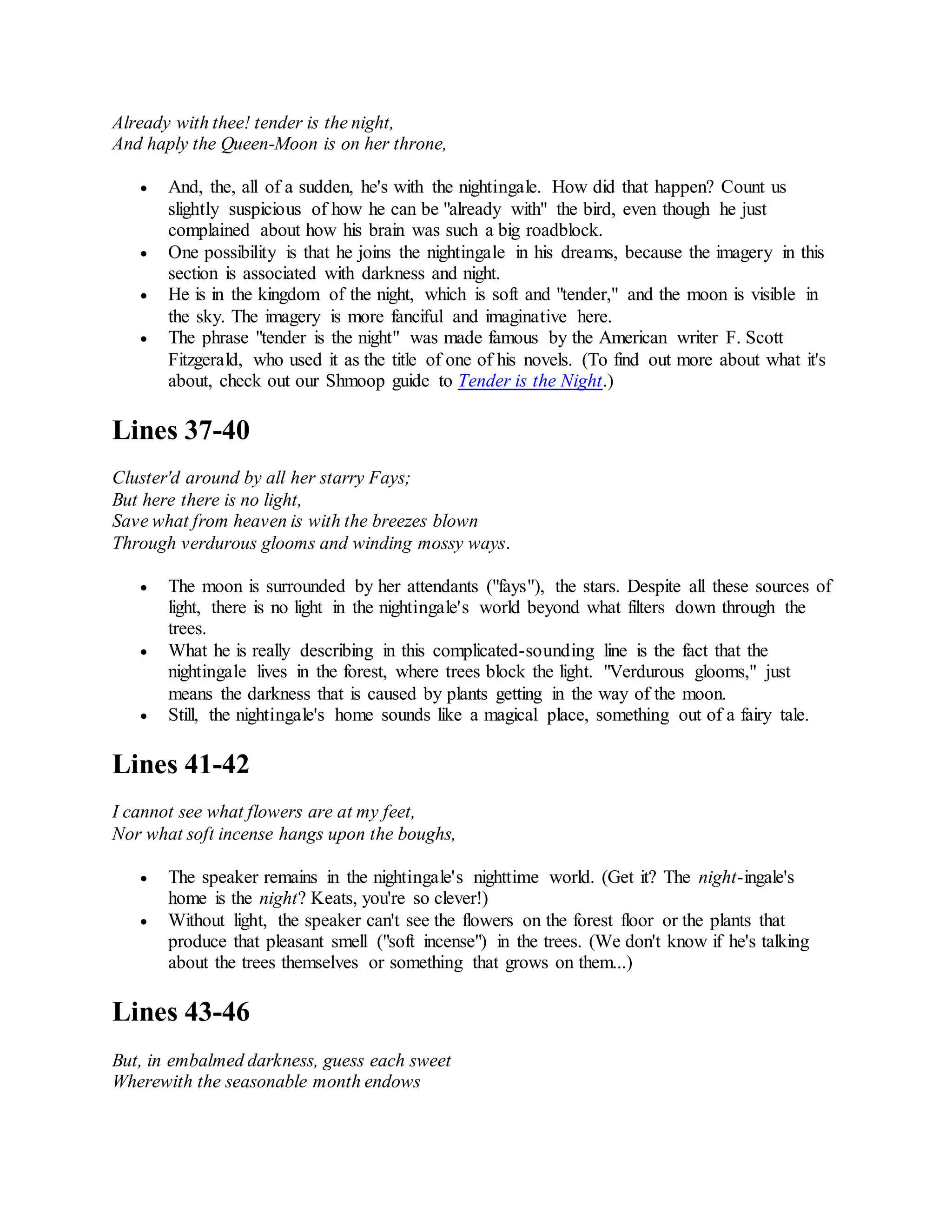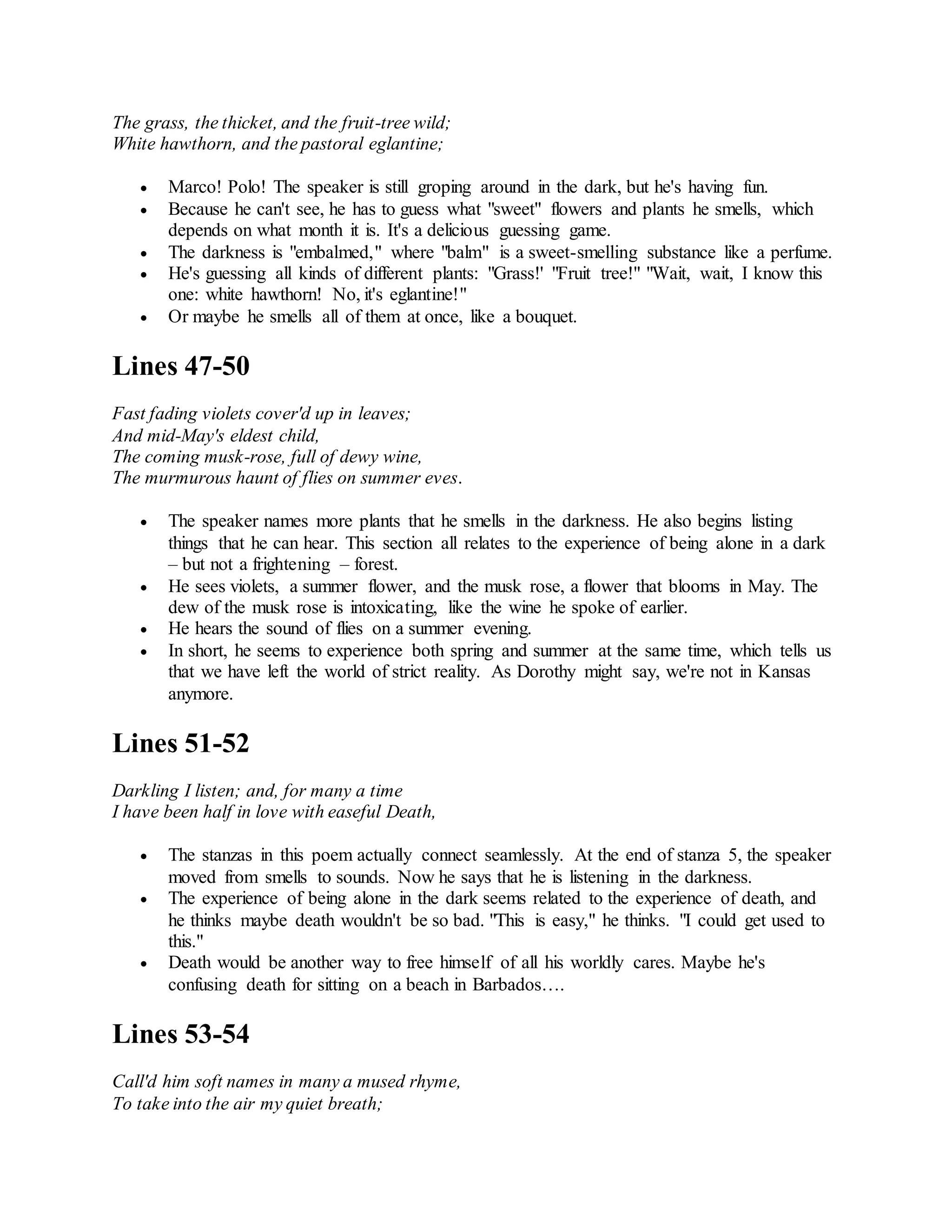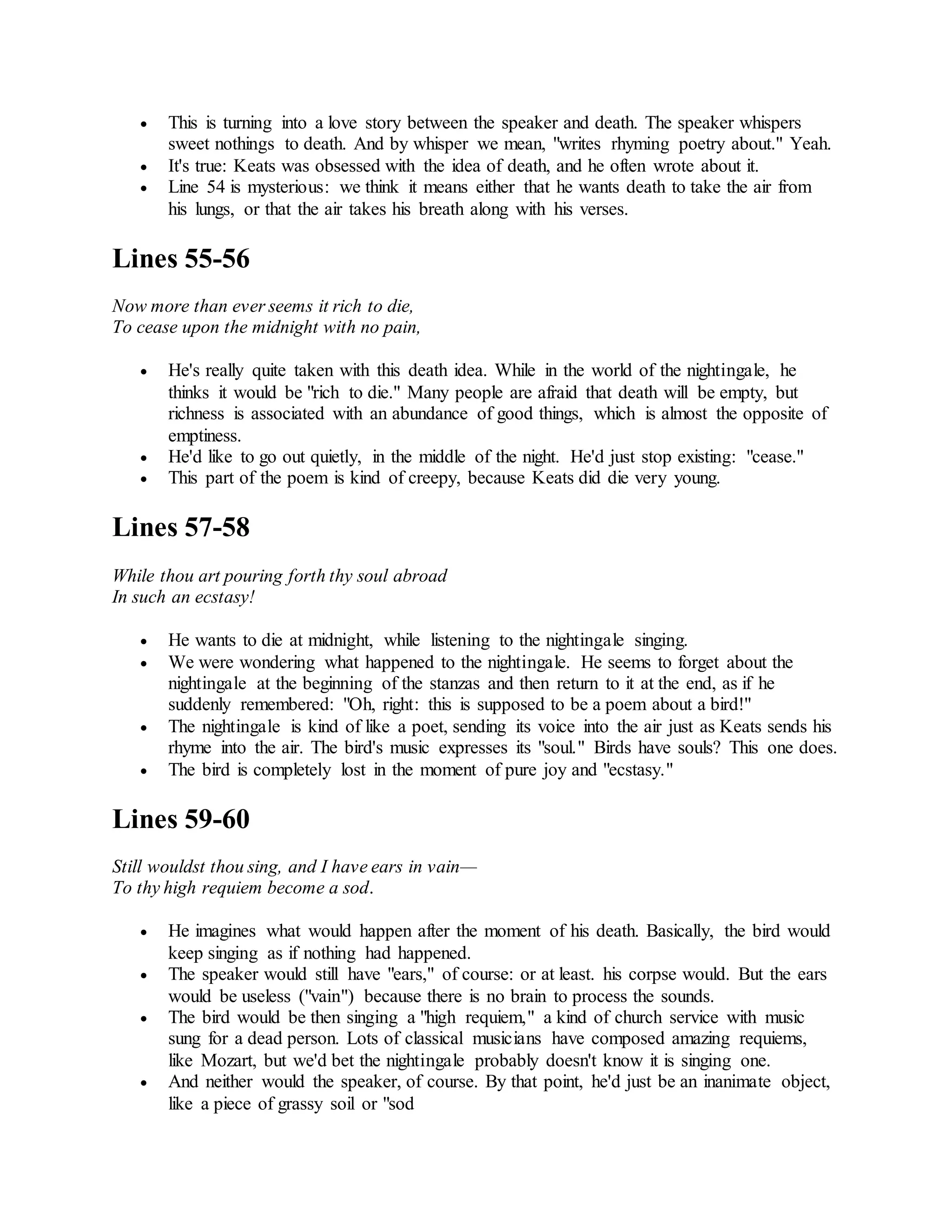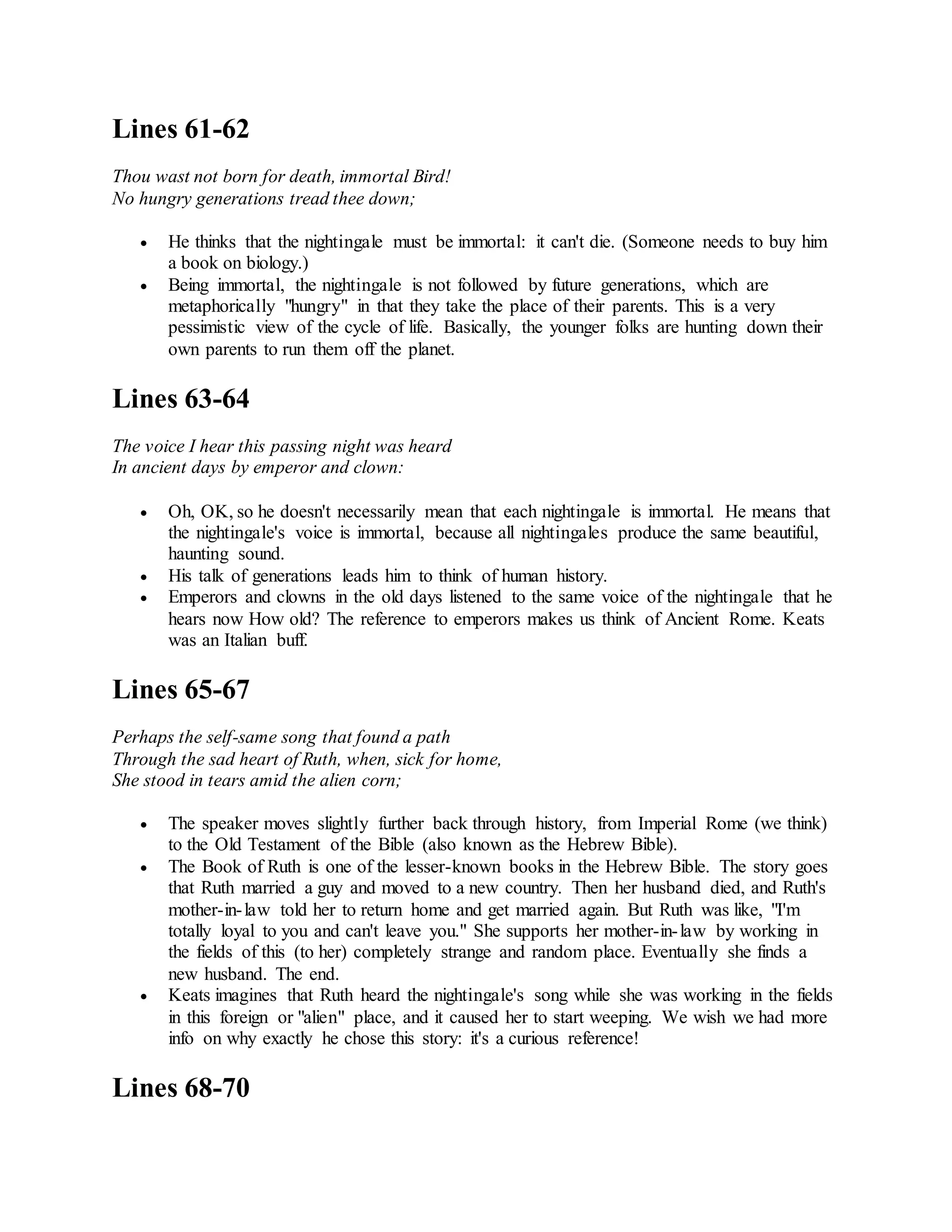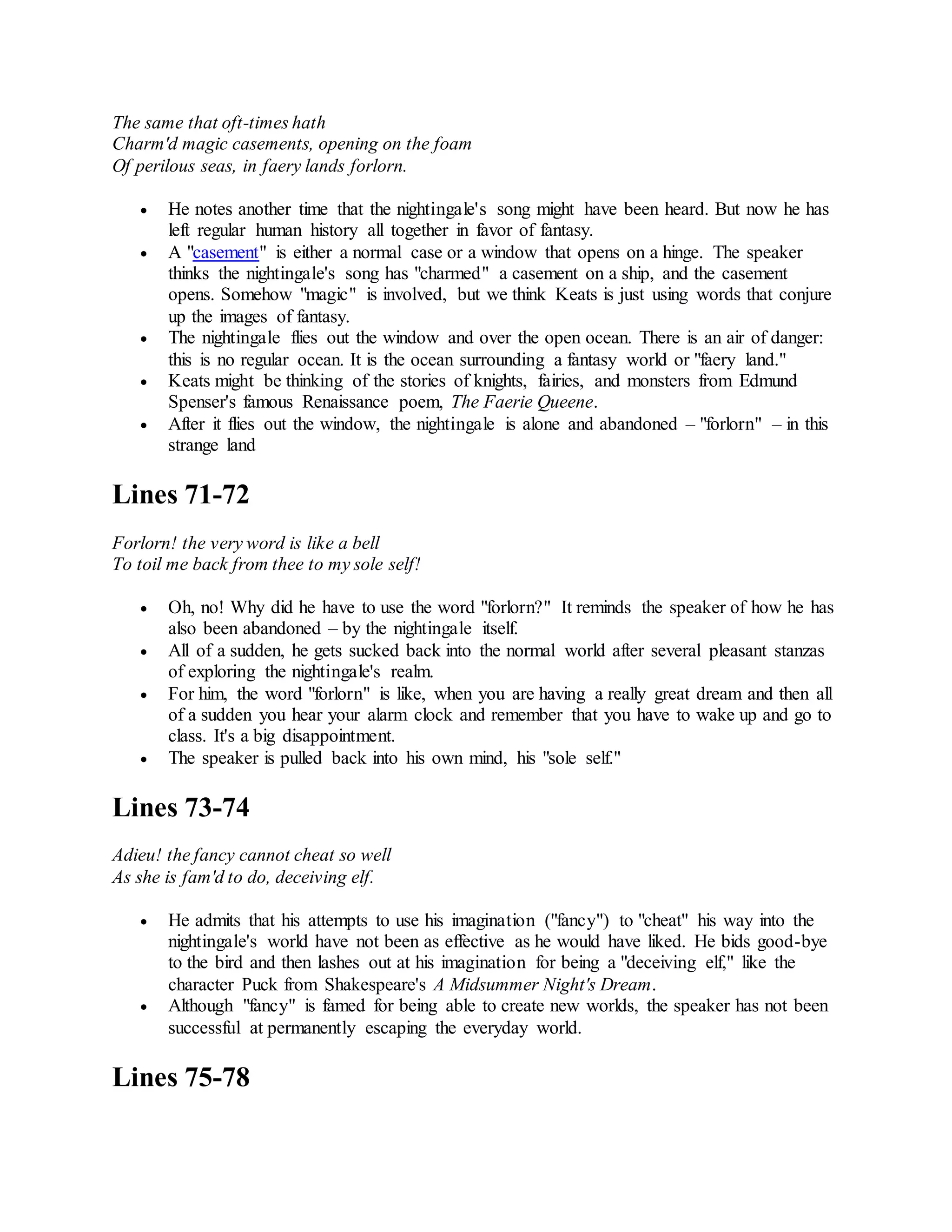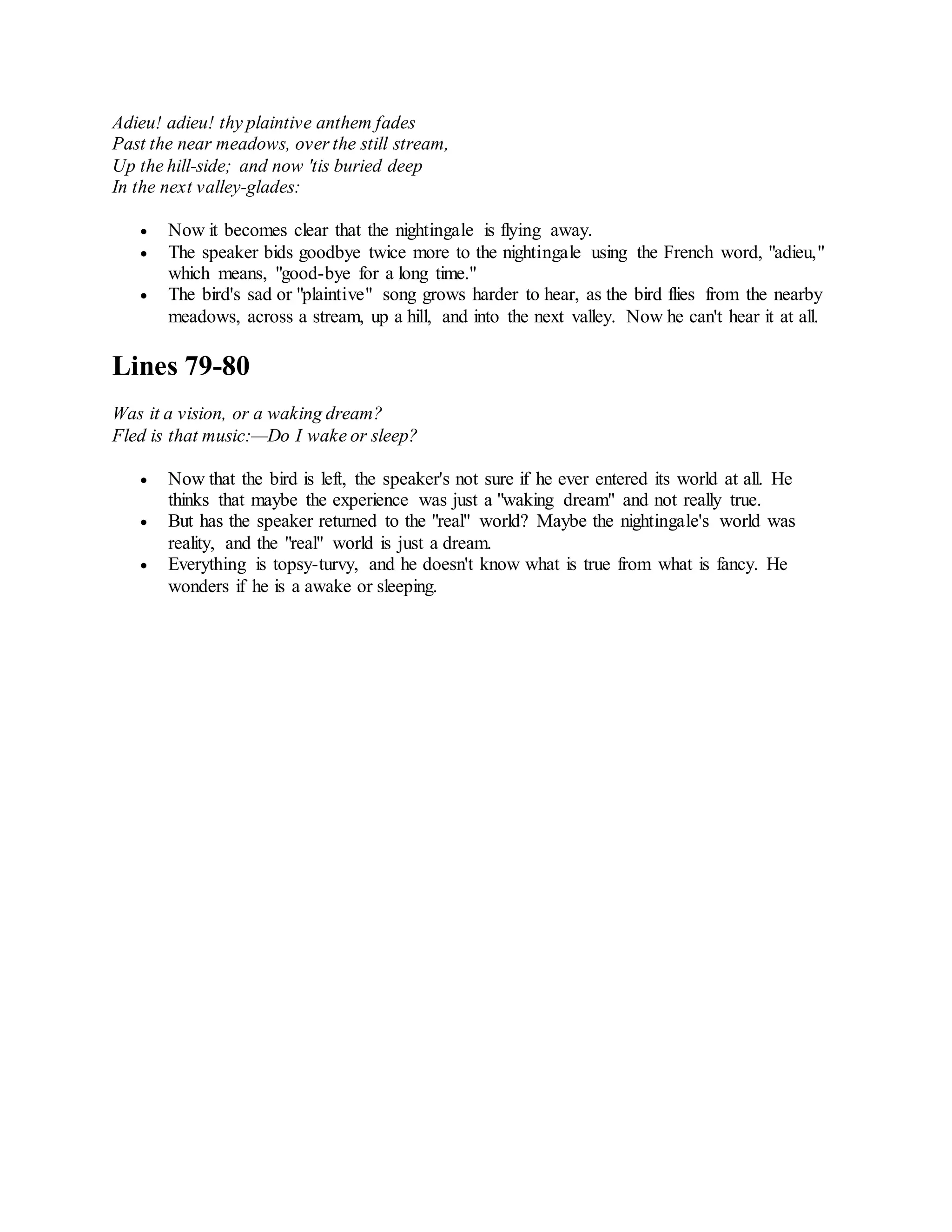The speaker feels numb and woozy, as if he has taken poison or a powerful drug. He envies the nightingale, which sings happily in the forest without cares or worries. The speaker longs to forget his weariness with the world by drinking wine that would allow him to fade into the forest with the nightingale and escape humanity's troubles.
